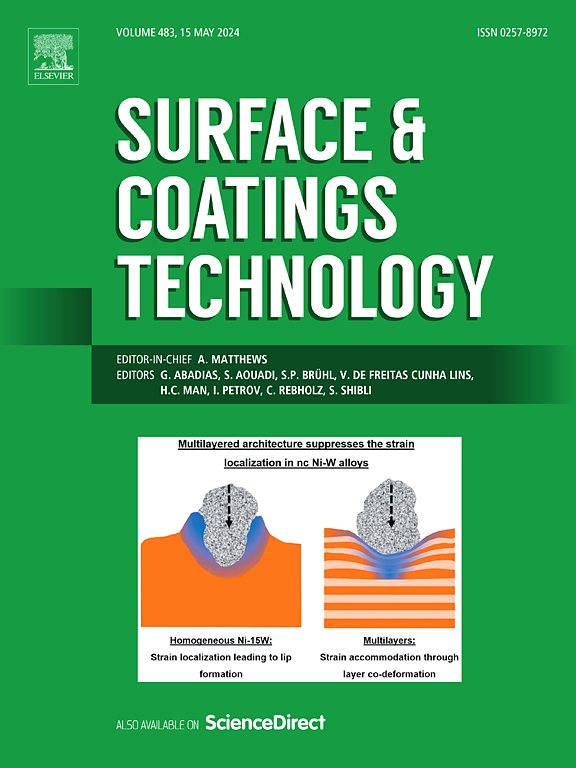Effect of powder morphology on tribological performance of HVAF-sprayed WC-CoCr coatings
IF 5.3
2区 材料科学
Q1 MATERIALS SCIENCE, COATINGS & FILMS
引用次数: 0
Abstract
This study investigates the tribological behavior of WC-CoCr coatings deposited using High-Velocity Air Fuel (HVAF) thermal spraying. Three distinct types of feedstock powders were employed to examine the influence of powder morphology on coating performance: a dense, angular fused-and-crushed powder; a spherical, porous agglomerated-and-sintered powder, and a newly developed powder with intermediate features. All powders had analogous particle size distribution approximately in the range of 7–20 μm. Two coating thicknesses were deposited with each powder (50 μm and 150 μm), additionally aiming to verify the possibility of depositing thin hardmetal coatings. The coatings microstructure was characterized, their hardness and porosity were measured and their tribological properties were evaluated by means of ball-on-disk sliding tests and dry jet erosion tests at various impact angles.
The results demonstrated that powder morphology significantly affects deposition efficiency. The newly developed powder offers notable advantages, such as higher deposition efficiency, which accelerates the spraying process and boosts production productivity, along with reduced sensitivity to parameter variations. In fact, the newly developed powder exhibited more consistent deposition rates across varying process conditions. Coatings derived from the new manufacturing route powder also showed improved cohesion and hardness due to stronger interparticle bonding and peening effects. On the other hand, surface roughness was unaffected by the powder type, and the coatings produced from the three powders had comparable wear resistance under erosion and sliding conditions. Coating thickness, rather than powder morphology, appeared to play a greater role in determining wear performance. The thicker coatings demonstrated superior resistance under both test conditions, due to reduced substrate influence.
求助全文
约1分钟内获得全文
求助全文
来源期刊

Surface & Coatings Technology
工程技术-材料科学:膜
CiteScore
10.00
自引率
11.10%
发文量
921
审稿时长
19 days
期刊介绍:
Surface and Coatings Technology is an international archival journal publishing scientific papers on significant developments in surface and interface engineering to modify and improve the surface properties of materials for protection in demanding contact conditions or aggressive environments, or for enhanced functional performance. Contributions range from original scientific articles concerned with fundamental and applied aspects of research or direct applications of metallic, inorganic, organic and composite coatings, to invited reviews of current technology in specific areas. Papers submitted to this journal are expected to be in line with the following aspects in processes, and properties/performance:
A. Processes: Physical and chemical vapour deposition techniques, thermal and plasma spraying, surface modification by directed energy techniques such as ion, electron and laser beams, thermo-chemical treatment, wet chemical and electrochemical processes such as plating, sol-gel coating, anodization, plasma electrolytic oxidation, etc., but excluding painting.
B. Properties/performance: friction performance, wear resistance (e.g., abrasion, erosion, fretting, etc), corrosion and oxidation resistance, thermal protection, diffusion resistance, hydrophilicity/hydrophobicity, and properties relevant to smart materials behaviour and enhanced multifunctional performance for environmental, energy and medical applications, but excluding device aspects.
 求助内容:
求助内容: 应助结果提醒方式:
应助结果提醒方式:


